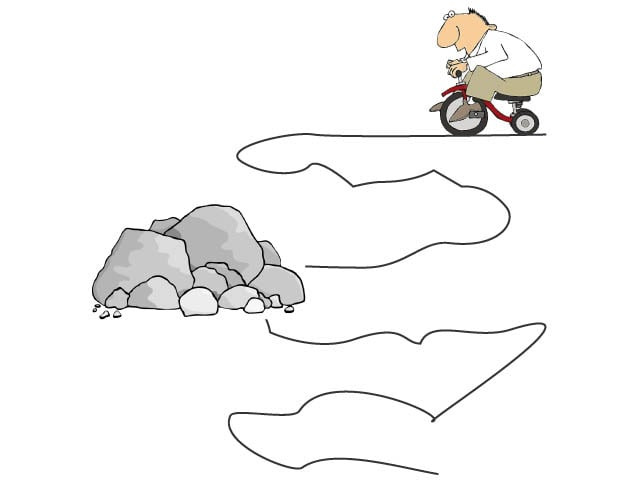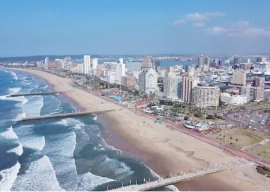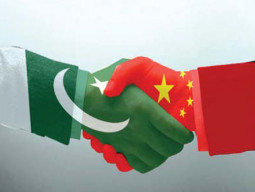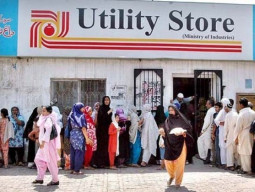
This framework talks about productivity, market reforms, creative cities, connectivity infrastructure and youth engagement as essential pillars of new growth model. And in order to capture the response of youth — the single largest group as stakeholder of economic growth or the lack of it — the Commission recently organised a consultative roundtable with students, young leaders, entrepreneurs, youth serving agencies and experts from across Pakistan.
According to the “New Growth Framework”, Pakistan’s economic growth has largely been a function of external resource inflow and public sector projects. The planning process has been largely seen as an instrument to launch projects. The new model assumes an ‘endogenous’ approach by giving more importance to productivity and efficiency by investing more on human development. To achieve this, the framework suggests, the government should declare promotion of innovation and entrepreneurship as a cornerstone of their facilitative role.
It would be probably fair to give the credit to first ‘Haque’ in the Planning Commission, who, following the footsteps of Amartya Sen popularised the idea of human development in late seventies. It is instructive to recall that Mahboobul Haque realised this after publicly admitting that the Ayub Khan’s economic model, largely orchestrated by him and other Harvard economists, had actually churned out the 22 families.
Now another Haque - from Chicago - is talking about human development. Nadeemul Haque too is a US-trained economist with a longcareer at the IMF. However, he is bold enough to think beyond the traditional development economists who hold sway at the Planning Commission even now. What is heartening to note that the head of the official think tank is probing deep and asking the right questions.
The new growth framework identifies several instances where government presence, despite the apparent liberalisation, continues to stifle the private initiative. For example, it rightly points out that The Agriculture Markets Act of 1939 is still in effect in Pakistan, though with some amendments in Punjab and Sindh. This Act gives the control of agriculture markets to the government. It is a commonplace observation that in each harvesting season, the provincial governments take pains, and still fail, in doing what the private sector can do with light regulation: procurement and supply.
The new growth framework suffers from a common intellectual apathy: it rejects the ‘other’ with a broad brush and introduces itself as completely new. This approach is not suitable for an agency that should be inclusive and participatory.
We have two very revealing and comparable business histories. I call them Faisalabad and Sialkot. The history of economic development in Faisalabad city, our Manchester, is replete with subsidies, licenses, quotas, protections and exemptions. Despite enjoying this protective and blue eyed boy status for six decades, its textile industry is in shambles. Bangladesh, despite having the need to import cotton, now exceeds Pakistan in the value added textiles export proceeds. The energy crisis is daunting indeed but it is now over-played as a cover-up. There was no such crisis in 2005, when we already had started on the downward spiral. In 2005, the world embraced a quota-free regime. The energy crisis proved to be the last nail in its coffin.
The Planning Commission document does acknowledge the dominance of rent-seekers in the business community however it does not acknowledge models of competitive and productive entrepreneurship in our history.
Sialkot is a text book case of spontaneous growth and competitive economy. This city where not just business but public infrastructure projects like airport are privately financed, presents a completely different picture. Started with a spontaneous business opportunity after copying a football of a British captain around 1880, who brought it to an ingenious cobbler, this city has never disappointed Pakistan in earning foreign exchange through exports. Its factories making world class surgical instruments and sportswear shine and prosper. Vast majority of locals are directly or indirectly associated with an export business. They win, lose and thrive in competition.
The new growth framework should take a careful look at similar examples of productive entrepreneurship. This will reveal drivers of new growth. From the round of consultations, it appears that the Commission focused on isolated case studies and not the bigger picture. This approach is good for reports, not for a growth strategy of a nation. It must not lose the sight of the forest while looking for trees.
The writer an economics consultant, is Director Programme and Development at the Alternate Solutions Institute, Lahore. He can be contacted at ali@asinstitute.org
Published in The Express Tribune, February 14th, 2011.


















COMMENTS
Comments are moderated and generally will be posted if they are on-topic and not abusive.
For more information, please see our Comments FAQ